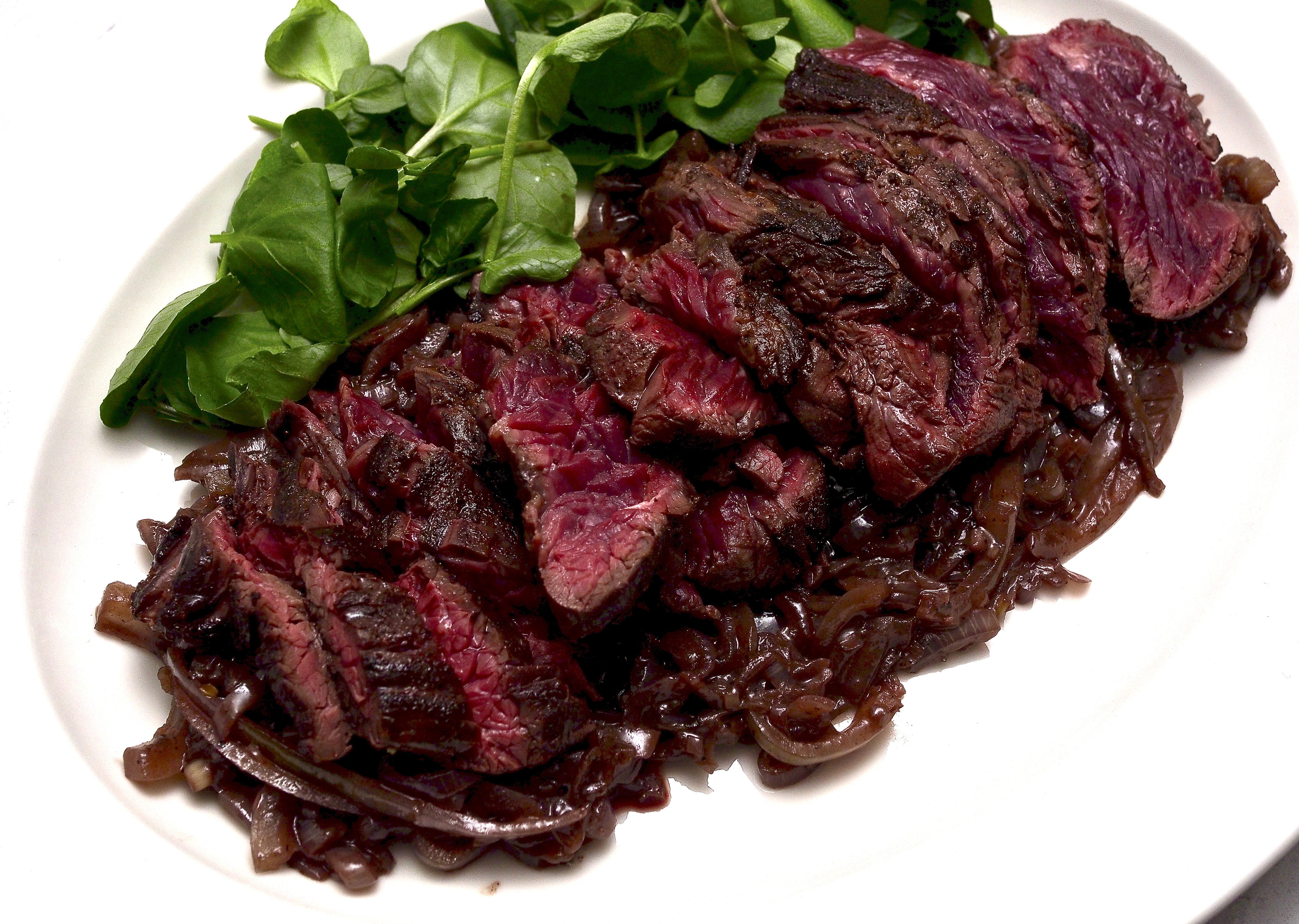
A delicious steak recipe from Mezcla by Ixta Belfrage. Ixta fries the steak in a pan over a high heat, we used a barbecue – fabulous flavours either way. You will need to grind about 3 black limes to get enough for the marinade and the butter.
Wine Suggestion: Thanks to our friends Tim & Mick, who’ve been travelling recently, we had an excellent Öküzgözü from Turkey which was regal, refined, and a delightful surprise. We wish we could remember the name of the winery as we forgot to take a picture and the bottle recycling was done the next day before we remembered! Full of black cherry, raspberry, and dark mulberry flavours; this was complex and had layers of dark chocolate, licorice, leather, tobacco, cloves, and something slightly herbal and minty, but we couldn’t put our finger on what.
Bavette steak with black lime & maple butter – serves 4
- 500g bavette steak, cut into 3 equal pieces
- 300g ripe tomatoes
- ½ red onion
- 1 lemon, cut into wedges, to serve
FOR THE MARINADE:
- 1 tsp fine salt
- 3 tbsp olive oil
- 1 tsp Urfa chili flakes (we used a mixture of smoked paprika and aleppo pepper)
- 1½ tsp ground black lime
- about 50 twists of black pepper
FOR THE SOY AND MAPLE BUTTER:
- 40g ghee or unsalted butter
- 1 tbsp soy sauce or tamari
- 2½ tsp maple syrup
- ½ a small clove of garlic, finely grated
- ¾ tsp ground black lime
- ¾ tsp Urfa chilli flakes (see above)
Pat the steak dry and put into a large bowl. Add all the marinade ingredients and rub into the steaks. Leave aside for 10 minutes or up to 1 hour (you can do this further ahead and leave in the fridge but make sure you bring them back to room temperature before cooking).
Get your barbecue very hot, then sear the steaks for 2 minutes on each side, you want them dark brown on the outside but rare in the middle. Transfer to a warm plate and rest for 8 minutes, turning over halfway.
While the steaks are resting, slice the tomatoes and onions and arrange on a platter. Sprinkle with ½ tsp flaked salt.
Melt the ghee in a small saucepan over a medium heat. When it is melted and hot, remove from the heat and stir in the soy sauce, maple syrup, garlic, black lime and chilli flakes.
Slice the bavette against the grain and arrange over the onions and tomatoes. Sprinkle with some sea salt, then spoon over the soy and maple butter and serve with the lemon wedges on the side.
(Original recipe from Mezcla by Ixta Belfrage, Ebury Press, 2022.)











 Mid-week celebrations can be a bit tricky, especially when work and life are busy. This was Jules’ choice for birthday dinner on a Tuesday in November and we would recommend it for a mid-week birthday at any time of year.
Mid-week celebrations can be a bit tricky, especially when work and life are busy. This was Jules’ choice for birthday dinner on a Tuesday in November and we would recommend it for a mid-week birthday at any time of year.







